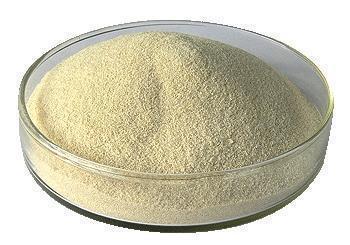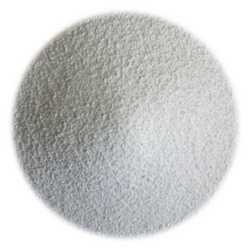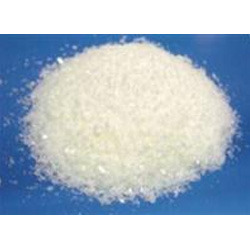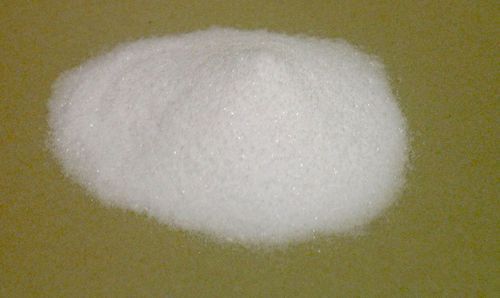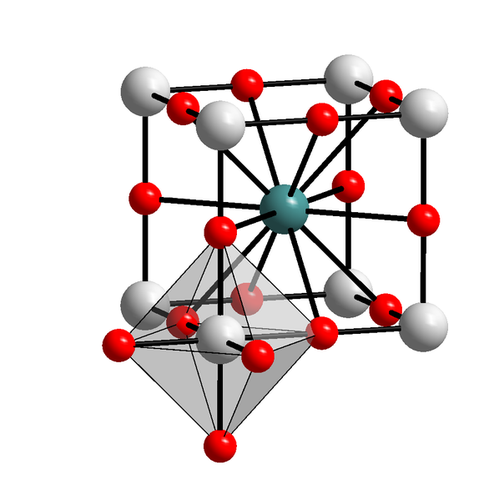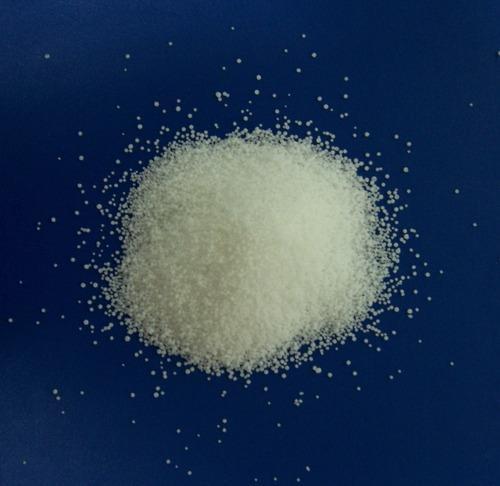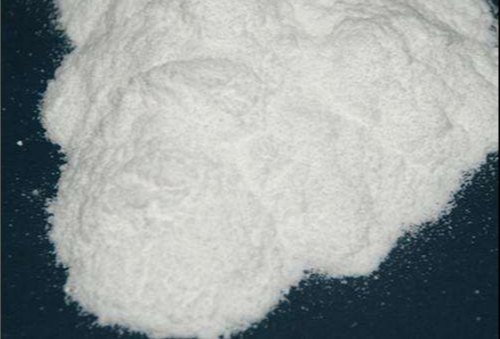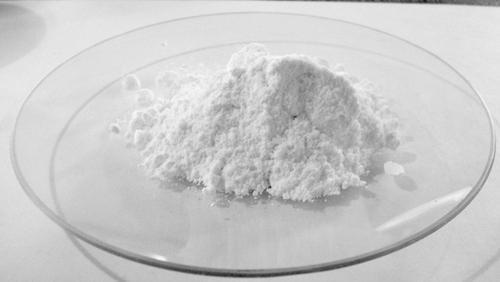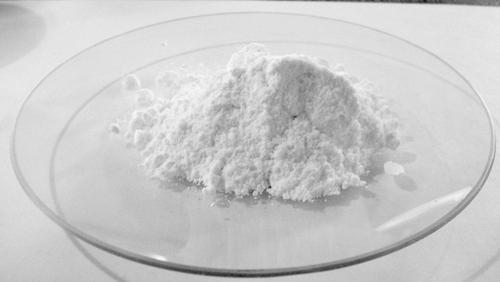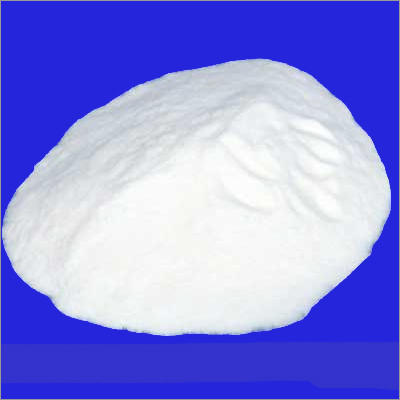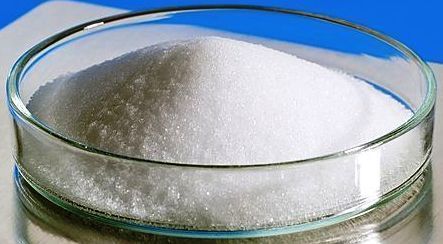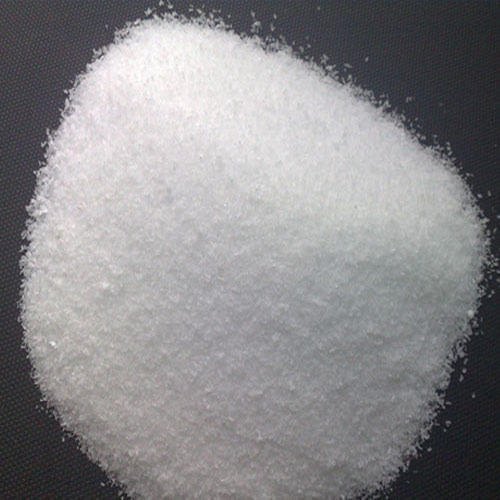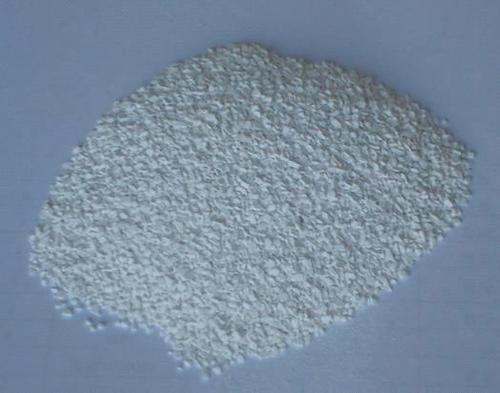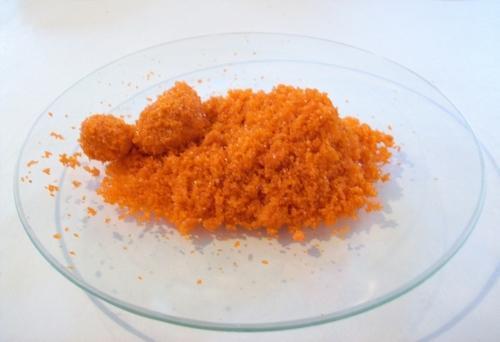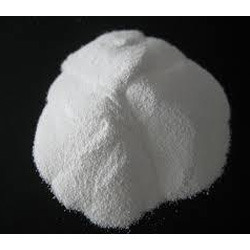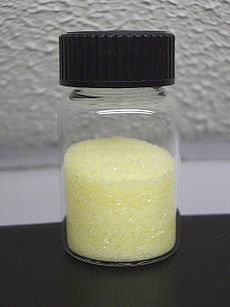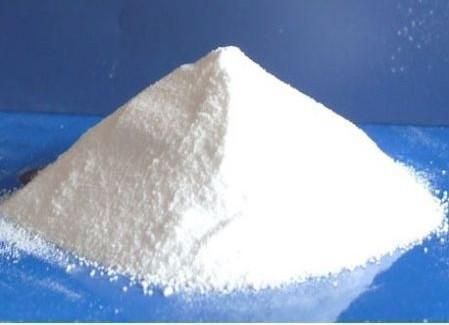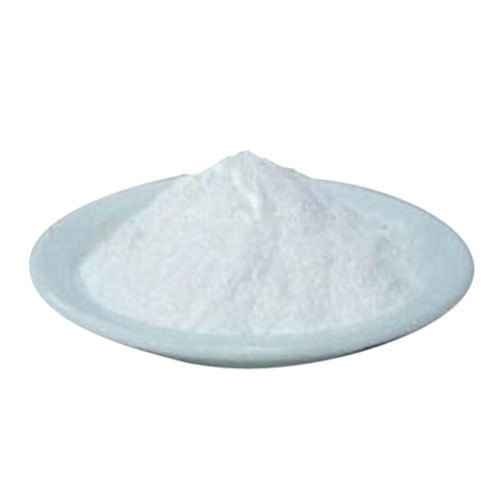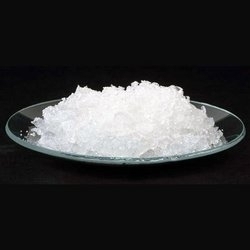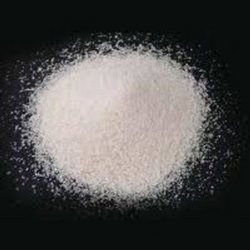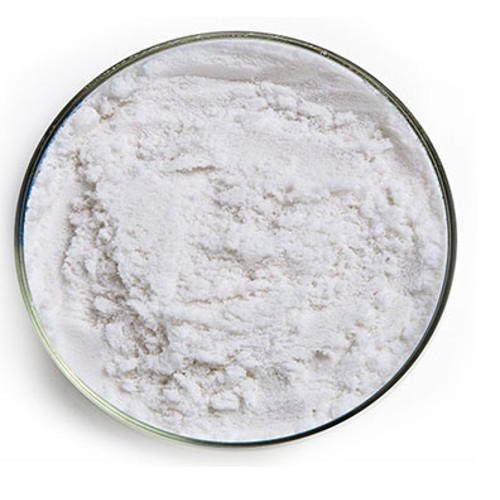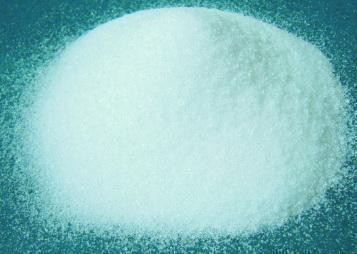Sodium Part I
Providing you the best range of sodium alginate, sodium ferrocyanide, sodium borohydride synthesis, sodium bromide pure, sodium formate and sodium cyanate pure with effective & timely delivery.
Sodium Alginate
As a flavorless gum, it is used by the foods industry to increase viscosity and as an emulsifier. It is also used in indigestion tablets and the preparation of dental impressions.
A major application for sodium alginate is in reactive dye printing, as thickener for reactive dyestuffs (such as the Procion cotton-reactive dyes) in textile screen-printing and carpet jet-printing.
Alginates do not react with these dyes and wash out easily, unlike starch-based thickeners.
Sodium alginate is a good chelator for pulling radioactive substances from the body, such as iodine-131 and strontium-90, that have taken the place of their non-radioactive counterparts.It is also used in immobilizing enzymes by inclusion.
Sodium Ascorbate
Sodium Ascorbate is one of a number of mineral salts of ascorbic acid (vitamin C). The molecular formula of this chemical compound is C6H7NaO6. As the sodium salt of ascorbic acid, it is known as a mineral ascorbate. It has not been demonstrated to be more bioavailable than any other form of vitamin C supplement.
Sodium Arsenate AR
Sodium arsenate is the inorganic compound with the formula Na3AsO4. Related salts are also called sodium arsenate, including Na2HAsO4 (disodium hydrogen arsenate) and NaH2AsO4 (sodium dihydrogen arsenate). The trisodium salt is a white or colourless solid that is highly toxic. It is usually handled as the dodecahydrate Na3AsO4.12H2O.
Sodium Arsenite AR
Sodium arsenite usually refers to the inorganic compound with the formula NaAsO2. Also called sodium meta-arsenite, it is the sodium salt of arsenous acid. Sodium arsenite also ) Na3AsO3, called sodium ortho-arsenite.The compounds are colourless solids.
Sodium Azide
Sodium azide is the inorganic compound with the formula NaN3. This colorless salt is the gas-forming component in many car airbag systems. It is used for the preparation of other azide compounds. It is an ionic substance, is highly soluble in water, and is very acutely toxic.
Sodium Acetate Anhydrous
Keeping in mind the ever-evolving requirements of our prestigious clients, we are offering Sodium Acetate Anhydrous. The offered sodium acetate anhydrous is formulated utilizing superior quality chemical compounds and ultra-modern technology in sync with set norms of industry. Our given sodium acetate anhydrous is used in the textile industry to neutralize sulfuric acid waste streams. The sodium acetate anhydrous provided by us can also be availed at nominal rates in a confine time.
Features:
- Correct formulation
- Commonly used laboratory reagent
- Longer shelf life
Sodium Acetate Trihydrate
With enriched industrial experience and knowledge, we are providing the best grade of Sodium Acetate Trihydrate. The offered sodium acetate trihydrate is processed utilizing best in class chemical compounds and modern technology in line with the industry standards. Our given sodium acetate trihydrate is tested on different parameters of quality so as to deliver qualitative assured at customer’s end. Our valuable customers can avail this sodium acetate trihydrate at market price.
Features:
- Reliability
- Effectiveness
- Accurate composition
Sodium Benzoate
Sodium benzoate has the chemical formula NaC7H5O2; it is a widely used food preservative, with E number E211. It is the sodium salt of benzoic acid and exists in this form when dissolved in water. It can be produced by reacting sodium hydroxide with benzoic acid. Benzoic acid occurs naturally at low levels in cranberries, prunes, greengage plums, cinnamon, ripe cloves, and apples.
Sodium Bicarbonate
Sodium bicarbonate (IUPAC name: sodium hydrogen carbonate) is the chemical compound with the formula NaHCO3. Sodium bicarbonate is a white solid that is crystalline but often appears as a fine powder. It has a slightly salty, alkaline taste resembling that of washing soda (sodium carbonate). The natural mineral form is nahcolite. It is a component of the mineral natron and is found dissolved in many mineral springs. It is among the food additives encoded by European Union, identified by the initials E 500. Since it has long been known and is widely used, the salt has many related names such as baking soda, bread soda, cooking soda, and bicarbonate of soda.The word saleratus, from Latin sal æratus meaning aerated salt, was widely used in the 19th century for both sodium bicarbonate and potassium bicarbonate. The term has now fallen out of common usage.
Sodium Bismuthate
Sodium bicarbonate (IUPAC name: sodium hydrogen carbonate) is the chemical compound with the formula NaHCO3. Sodium bicarbonate is a white solid that is crystalline but often appears as a fine powder. It has a slightly salty, alkaline taste resembling that of washing soda (sodium carbonate). The natural mineral form is nahcolite. It is a component of the mineral natron and is found dissolved in many mineral springs. It is among the food additives encoded by European Union, identified by the initials E 500. Since it has long been known and is widely used, the salt has many related names such as baking soda, bread soda, cooking soda, and bicarbonate of soda.The word saleratus, from Latin sal æratus meaning aerated salt, was widely used in the 19th century for both sodium bicarbonate and potassium bicarbonate. The term has now fallen out of common usage.
Sodium Bisulphate Monohydrate
Sodium bicarbonate (IUPAC name: sodium hydrogen carbonate) is the chemical compound with the formula NaHCO3. Sodium bicarbonate is a white solid that is crystalline but often appears as a fine powder. It has a slightly salty, alkaline taste resembling that of washing soda (sodium carbonate). The natural mineral form is nahcolite. It is a component of the mineral natron and is found dissolved in many mineral springs. It is among the food additives encoded by European Union, identified by the initials E 500. Since it has long been known and is widely used, the salt has many related names such as baking soda, bread soda, cooking soda, and bicarbonate of soda.The word saleratus, from Latin sal æratus meaning aerated salt, was widely used in the 19th century for both sodium bicarbonate and potassium bicarbonate. The term has now fallen out of common usage.
Sodium Bromide Pure
Sodium Bromide Pure is an inorganic compound with the formula NaBr. It is a high-melting white, crystalline solid that resembles sodium chloride. It is a widely used source of the bromide ion and has many applications.
Sodium Bitartrate
Monosodium tartrate or sodium bitartrate is a sodium acid salt of tartaric acid. As a food additive it is used as an acidity regulator and is known by the E number E335. As an analytical reagent, it can be used in a test for ammonium cation which gives a white precipitate.
Sodium Bromate Extra Pure
Sodium Bromate Extra pure, the inorganic compound with the chemical formula of NaBrO3, is the sodium salt of bromic acid. It is a strong oxidant. Sodium bromate is mainly used in continuous or batch dyeing processes involving sulfur or vat dyes and as a hair-permagent, chemical agent, or gold solvent in gold mines when used with sodium bromide.
Sodium Bifluoride
Sodium bifluoride is the inorganic compound with the formula NaHF2. It is a salt of sodium cation (Na+) and bifluoride anion (HF2-). It is a white, water-soluble solid that decomposes upon heating. Sodium bifluoride is non-flammable, hygroscopic, and has a pungent smell.Sodium bifluoride has a number of applications in industry.
Sodium Bisulphite EP
Sodium fluoride is an inorganic chemical compound with the formula NaF. A colorless solid, it is a source of the fluoride ion in diverse applications. Sodium fluoride is less expensive and less hygroscopic than the related salt potassium fluoride.
Disodium Borate
Borax, also known as sodium borate, sodium tetraborate, or disodium tetraborate, is an important boron compound, a mineral, and a salt of boric acid. Powdered borax is white, consisting of soft colorless
crystals that dissolve easily in water.
Borax has a wide variety of uses. It is a component of many detergents, cosmetics, and enamel glazes. It is also used to make buffer solutions in biochemistry, as a fire retardant, as an anti-fungal compound for fiberglass, as a flux in metallurgy, neutron-capture shields for radioactive sources, a texturing agent in cooking, and as a precursor for other boron compounds.
Sodium Carbonate Anhydrous
Sodium carbonate (also known as washing soda, soda ash and soda crystals), Na2CO3, is a sodium salt of carbonic acid (soluble in water).
It most commonly occurs as a crystalline heptahydrate, which readily effloresces to form a white powder, the monohydrate. Pure sodium carbonate is a white, odourless powder that is hygroscopic (absorbs moisture from the air), has an alkaline taste, and forms a strongly alkaline water solution. Sodium carbonate is well known domestically for its everyday use as a water softener. It can be extracted from the ashes of many plants growing in sodium-rich soils, such as vegetation from the Middle East, kelp from Scotland and seaweed from Spain. Because the ashes of these sodium-rich plants were noticeably different from ashes of timber (used to create potash), they became known as "soda ash".It is synthetically produced in large quantities from salt (sodium chloride) and limestone by a method known as the Solvay process.
Sodium Carbonate Anhydrous AR
Sodium carbonate (also known as washing soda, soda ash and soda crystals), Na2CO3, is a sodium salt of carbonic acid (soluble in water).
It most commonly occurs as a crystalline heptahydrate, which readily effloresces to form a white powder, the monohydrate. Pure sodium carbonate is a white, odourless powder that is hygroscopic (absorbs moisture from the air), has an alkaline taste, and forms a strongly alkaline water solution. Sodium carbonate is well known domestically for its everyday use as a water softener. It can be extracted from the ashes of many plants growing in sodium-rich soils, such as vegetation from the Middle East, kelp from Scotland and seaweed from Spain. Because the ashes of these sodium-rich plants were noticeably different from ashes of timber (used to create potash), they became known as "soda ash".It is synthetically produced in large quantities from salt (sodium chloride) and limestone by a method known as the Solvay process.
Sodium Carbonate Monohydrate
Sodium carbonate (also known as washing soda, soda ash and soda crystals), Na2CO3, is a sodium salt of carbonic acid (soluble in water).
It most commonly occurs as a crystalline heptahydrate, which readily effloresces to form a white powder, the monohydrate. Pure sodium carbonate is a white, odourless powder that is hygroscopic (absorbs moisture from the air), has an alkaline taste, and forms a strongly alkaline water solution. Sodium carbonate is well known domestically for its everyday use as a water softener. It can be extracted from the ashes of many plants growing in sodium-rich soils, such as vegetation from the Middle East, kelp from Scotland and seaweed from Spain. Because the ashes of these sodium-rich plants were noticeably different from ashes of timber (used to create potash), they became known as "soda ash". It is synthetically produced in large quantities from salt (sodium chloride) and limestone by a method known as the Solvay process.
Sodium Chloride Pure
Sodium chloride, also known as salt, common salt, table salt or halite, is an ionic compound with the chemical formula NaCl, representing equal proportions of sodium and chlorine. Sodium chloride is the salt most responsible for the salinity of the ocean and of the extracellular fluid of many multicellular organisms. In the form of edible or table salt it is commonly used as a condiment and food preservative. Large quantities of sodium chloride are used in many industrial processes, and it is a major source of sodium and chlorine compounds used as feedstocks for further chemical syntheses. A second major consumer of sodium chloride is deicing of roadways in sub-freezing weather.
Sodium Chloride AR
Sodium chloride, also known as salt, common salt, table salt or halite, is an ionic compound with the chemical formula NaCl, representing equal proportions of sodium and chlorine. Sodium chloride is the salt most responsible for the salinity of the ocean and of the extracellular fluid of many multicellular organisms. In the form of edible or table salt it is commonly used as a condiment and food preservative. Large quantities of sodium chloride are used in many industrial processes, and it is a major source of sodium and chlorine compounds used as feedstocks for further chemical syntheses. A second major consumer of sodium chloride is deicing of roadways in sub-freezing weather.
Sodium Chromate
Sodium chromate is the inorganic compound with the formula Na2CrO4. It exists as a yellow hygroscopic solid, which can form tetra-, hexa-, and decahydrates. It is an intermediate in the extraction of chromium from its ores. Sodium chromate, like other hexavalent chromium compounds, is toxic and carcinogenic.
Sodium Chlorite 80%
Sodium chlorite (NaClO2) is a chemical compound used in the manufacturing of paper.
| Specifications | |
|---|---|
| Purity | 99% |
| Grade | Laboratory |
| Form | Powder |
| Packaging Details | 25 Kg Bag |
| Concentration | 0.1 M |
Sodium Cyanate Pure
Sodium cyanate (NaOCN) is a colorless solid chemical compound.
Sodium cyanate can be prepared by the reaction between urea and sodium carbonate
Sodium Dichloroisocyanurate
Sodium dichloroisocyanurate (INN: sodium troclosene, troclosenum natricum or NaDCC or SDIC) is an inorganic compound. It is a colourless, water-soluble solid. It is a widely used cleansing agent and disinfectant.
Sodium Dichromate Dihydrate
Sodium dichromate is the inorganic compound with the formula Na2Cr2O7. Usually, however, the salt is handled as its dihydrate Na2Cr2O7·2H2O. Virtually all chromium ore is processed via conversion to sodium dichromate and virtually all compounds and materials based on chromium are prepared from this salt.[1] In terms of reactivity and appearance, sodium dichromate and potassium dichromate are very similar. The sodium salt is, however, around twenty times more soluble in water than the potassium salt (49 g/L at 0 °C) and its equivalent weight is also lower, which is often desirable.
Sodium Dithionite
Sodium dithionite (also known as sodium hydrosulfite) is a white crystalline powder with a weak sulfurous odor. It is the sodium salt of dithionous acid. Although it is stable under most conditions, it will decompose in hot water and in acid solutions.
Sodium Ferrocyanide
A wide quality array of products comprising Chemical Compound, Organic Compound, Boric Acid, Carnauba Wax, Crude Iodine, Ammonium Ferric Citrate, Gelatinous Substance, Inorganic Compound, Immersion Oil, Laboratory Chemicals,Magnesium Metal Turning, Wool Wax, Acenaphthene Chemical, Magnesium Metal Powder and Malt Sugar.
Sodium Formate
Sodium formate, HCOONa, is the sodium salt of formic acid, HCOOH. It usually appears as a white deliquescent powder.
Sodium Fluoroborate
Sodium fluoroacetate, known in pesticide form as 1080, is the organofluorine chemical compound with the formula FCH2CO2Na. This colourless salt has a taste similar to that of sodium chloride and is used as a metabolic poison. It occurs naturally as an anti-herbivore metabolite in various plants but can also be produced synthetically. It is a derivative of fluoroacetic acid, a carboxylic acid. The more common fluorinated acetic acid trifluoroacetic acid and its derivatives are far less toxic.
Sodium Fluoride
Sodium fluoride is an inorganic chemical compound with the formula NaF. A colorless solid, it is a source of the fluoride ion in diverse applications. Sodium fluoride is less expensive and less hygroscopic than the related salt potassium fluoride.
Sodium Formaldehyde Sulfoxylate
Rongalite, also called Rongalit (registered trademark of BASF), is sodium hydroxymethylsulfinate, or Na+HOCH2SO2-. The salt has many names, including also sodium formaldehyde sulfoxylate, and Bruggolite. It is listed in the European Cosmetics Directive as sodium oxymethylene sulfoxylate (INCI). It is water-soluble and generally sold as the dihydrate.
Sodium Iodide
Being a leader in the market, we are engaged in providing our clients a qualitative grade of Sodium Iodide. Offered sodium iodide is offered in different packaging options as per the needs of customers. Our offered sodium iodide is formulated by skilled professionals using quality chemical compounds and modern technology in observance with industry norms. The provided sodium iodide is tested by our quality experts at our labs so as to ensure its purity.
Features:
- Precise composition
- Crystalline
- Longer shelf life
Sodium Selenite
Being one of the renowned organizations in the market, we are highly engaged in offering Sodium Selenite. The offered sodium selenite is processed by experts utilizing best quality chemical compounds and advanced methodology keeping in mind the standards of industry. As well, this sodium selenite is used in the manufacture of colorless glass. This sodium selenite is available in variegated packaging options as per customers’ demands.
Features:
- Effectiveness
- White to light beige crystals
- Safe to use
Trisodium Citrate Purified
Trisodium citrate has the chemical formula of Na3C6H5O7. It is sometimes referred to simply as sodium citrate, though sodium citrate can refer to any of the three sodium salts of citric acid. It possesses a saline, mildly tart flavor. For this reason, citrates of certain alkaline and alkaline earth metals (e.g. sodium and calcium citrates) are commonly known as "sour salt" (occasionally citric acid is erroneously termed sour salt).
Chemical Products
- Aluminium Compound
- Ammonium Compound
- Antimony Compound
- Barium Compound
- Bismuth Compound
- Boric Acid
- Cadmium Compound
- Calcium Compound
- Cetramide
- Chemical Compound
- Chemical Element
- Copper Compound
- Cuprous Compound
- Ferric Compound
- Ferrous Compound
- Food Additives
- Gelatinous Substance
- Gum Powder
- Inorganic Compound
- Laboratory Chemicals
- Laboratory Equipment
- Lead Compound
- Lithium Compound
- Manganese Compound
- Magnesium Compound
- Magnesium Metal Turning
- Mercuric Compound
- Micrcoscopy Stains And Solutions
- Natural Oil
- Nickel Compound
- Organic Compound
- Potassium Compound
- Sodium Borohydride
- Speciality Chemicals
- Silver Compound
- Sodium Part I
- Sodium Part II
- Sodium Part III
- Strontium Compound
- Zinc Compound

